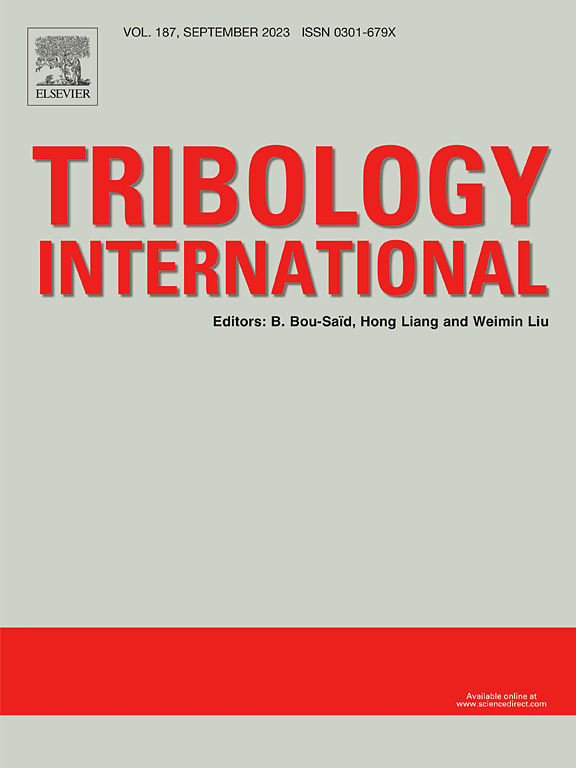Study of atomic-scale wear characteristics of a dual-phase TiAl alloy at different vibration frequencies
IF 6.1
1区 工程技术
Q1 ENGINEERING, MECHANICAL
引用次数: 0
Abstract
Duplex titanium-aluminum alloys have significant advantages in terms of mechanical properties, lightweight potential, and application prospects, and have become one of the important materials for key components in the aerospace field. A deeper understanding of the mechanisms of vibration friction wear behavior close to real operating conditions is essential. The mechanical characteristics, atomic displacements, shear stresses, and dislocation densities of γ/α2 biphasic TiAl alloys are examined in this work using molecular dynamics simulations at various vibration frequencies. It has been found that the greater the frequency of vibration, the smaller the total force on the substrate. Furthermore, the two-phase interface under friction at differing vibrational frequencies can significantly impede atomic motion. The friction process with a high vibrational frequency efficiently suppresses the anisotropic stress state, increasing the anisotropy of atomic motion. Increased vibration frequency raises the temperature of the friction region, which can lead to a softening effect that favors material removal. The microstructure evolution shows that many dislocations accumulate in the γ-phase. Higher vibration frequencies generate more defects, increasing dislocation density and the likelihood of plastic deformation in the material.
求助全文
约1分钟内获得全文
求助全文
来源期刊

Tribology International
工程技术-工程:机械
CiteScore
10.10
自引率
16.10%
发文量
627
审稿时长
35 days
期刊介绍:
Tribology is the science of rubbing surfaces and contributes to every facet of our everyday life, from live cell friction to engine lubrication and seismology. As such tribology is truly multidisciplinary and this extraordinary breadth of scientific interest is reflected in the scope of Tribology International.
Tribology International seeks to publish original research papers of the highest scientific quality to provide an archival resource for scientists from all backgrounds. Written contributions are invited reporting experimental and modelling studies both in established areas of tribology and emerging fields. Scientific topics include the physics or chemistry of tribo-surfaces, bio-tribology, surface engineering and materials, contact mechanics, nano-tribology, lubricants and hydrodynamic lubrication.
 求助内容:
求助内容: 应助结果提醒方式:
应助结果提醒方式:


